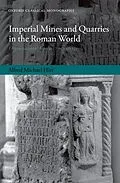The control over marble and metal resources was of major importance to the Roman Empire. The emperor's freedmen and slaves, officers and soldiers of the Roman army, equestrian officials, as well as convicts and free labour were seconded to mines and quarries throughout Rome's vast realm. Alfred Hirt's comprehensive study defines the organizational outlines and the internal structures of the mining and quarrying ventures under imperial control. The themes addressed include: challenges faced by those in charge of these extractive operations; the key figures, their subaltern personnel and their respective responsibilities; the role of the Roman army; the use of civilian partners in quarrying or mining ventures; and the position of the quarrying or mining organizations within the framework of the imperial administration.
Autorentext
Alfred Michael Hirt is a researcher at the University of Zurich, and visiting scholar, Cambridge University.
Inhalt
- 1: Introduction
- 2: Geological Constraints and Organizational Implications
- 3: Mining and Quarrying Districts
- 4: Imperial Officials and Extractive Operations
- 5: The Roman Army and Imperial Extractive Operations
- 6: Imperial Officials and the Allocation of Responsibilities
- 7: Private Partners to Imperial Operations: Occupatores/Coloni and Conductores
- 8: The Emperor and Imperial Extractive Operations
- 9: Imperial Mining and Quarrying Administration: A Conclusion
